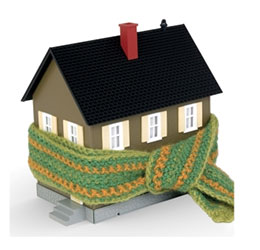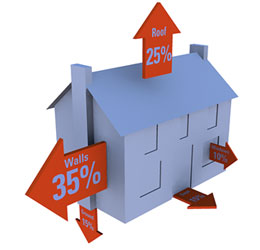

Benefits of External Wall Insulation
SAVE ON YOUR HEATING BILLS
The most significant heat loss in your home is through the external walls. This is estimated to be around 45% of the total heat loss,
resulting in high heating bills. By insulating your external walls, you can reduce heat loss and significantly cut your heating bills.
INCREASED COMFORT LEVELS
Your home will warm up more quickly if insulated and you won’t have to keep the heating on for as long to reach a comfortable temperature.
Condensation will be a thing of the past and without it less mould growth will occur, leading to a healthier living environment.
IMPROVED APPEARANCE
With the installation of external wall insulation your home will be transformed with a wide range of contemporary or traditional
finishes with a choice of textures, colours and finished effects.
EASY MAINTENANCE
The high performance render finishes used on the system offer excellent durability and protection against rain, UV rays from sunlight
and cracking. Our finishes have the colour pigments added during the mixing process which means they never have to be painted,
providing you with a low maintenance home.
INCREASED PROPERTY VALUE
With a transformation in its appearance and increased thermal performance the value of your home could increase.
REDUCE YOUR CARBON FOOTPRINT
High levels of heat loss also result in a high carbon footprint, by reducing these levels through insulation you will not only
be saving money but helping to protect the environment by reducing carbon emissions.
Why Insulate?
Space heating accounts for a minimum of 50% of the energy used in the average home. About 20% goes for heating water.
Lighting, appliances and everything else account for only 10 to 30%. Unless a home was constructed with special attention
to energy efficiency, adding insulation will reduce utility bills.
Older homes are likely to use more energy than newer homes, leading to very high heating bills. Even if it’s a new home,
adding insulation will normally save enough money in reduced utility bills to pay for itself within a few years and continue
to save money every year.
WHY INSULATE EXTERNALLY
If you own a house without a cavity in the walls, improving its thermal performance means insulating either internally or externally.
Using external wall insulation has the following advantages:
- No internal living space is lost as all the insulation is on the outside walls.
- No need to vacate the house whilst works takes place and no need to move furniture and fittings.
- No internal redecoration is required, particularly kitchens and bathrooms.
- Thicker or higher performing insulation can be used resulting in warmer walls.
- The risk of condensation and cold- bridging is eliminated as the whole building is wrapped in insulation.
- An exterior finish is developed which can often closely match the original or surrounding properties.
 Insulation is used for three main purposes:
Insulation is used for three main purposes:
- Conservation of Energy - prevent heat loss or gain
- Acoustic barrier to reduce sound transmission
- Barrier against the spread of smoke and fire
The crucial role of insulation
Inadequate insulation and air leakage are the leading causes of energy waste in most buildings.
Insulation saves money and protects limited energy resources. It also makes buildings more comfortable by helping
to maintain a uniform temperature. Walls, ceilings, and floors will be warmer in the winter and cooler in the summer.
Insulation also acts as a sound absorber or barrier, keeping noise levels down. It is possible to add insulation to almost any building.
Cold Bridges and Condensation
Places where there are weaknesses in the insulated envelope of a building are called cold or thermal bridges, this is because
they literally provide a "bridge" for heat to escape. This can be eliminated by an experienced insulation contractor.
Main areas for cold bridges are:
- At room corners, where walls meet ceilings or floors.
- Where metal pipes or steel cross insulation or a wall cavity
- Where there is a disruption of a wall cavity
- Around windows and doors

